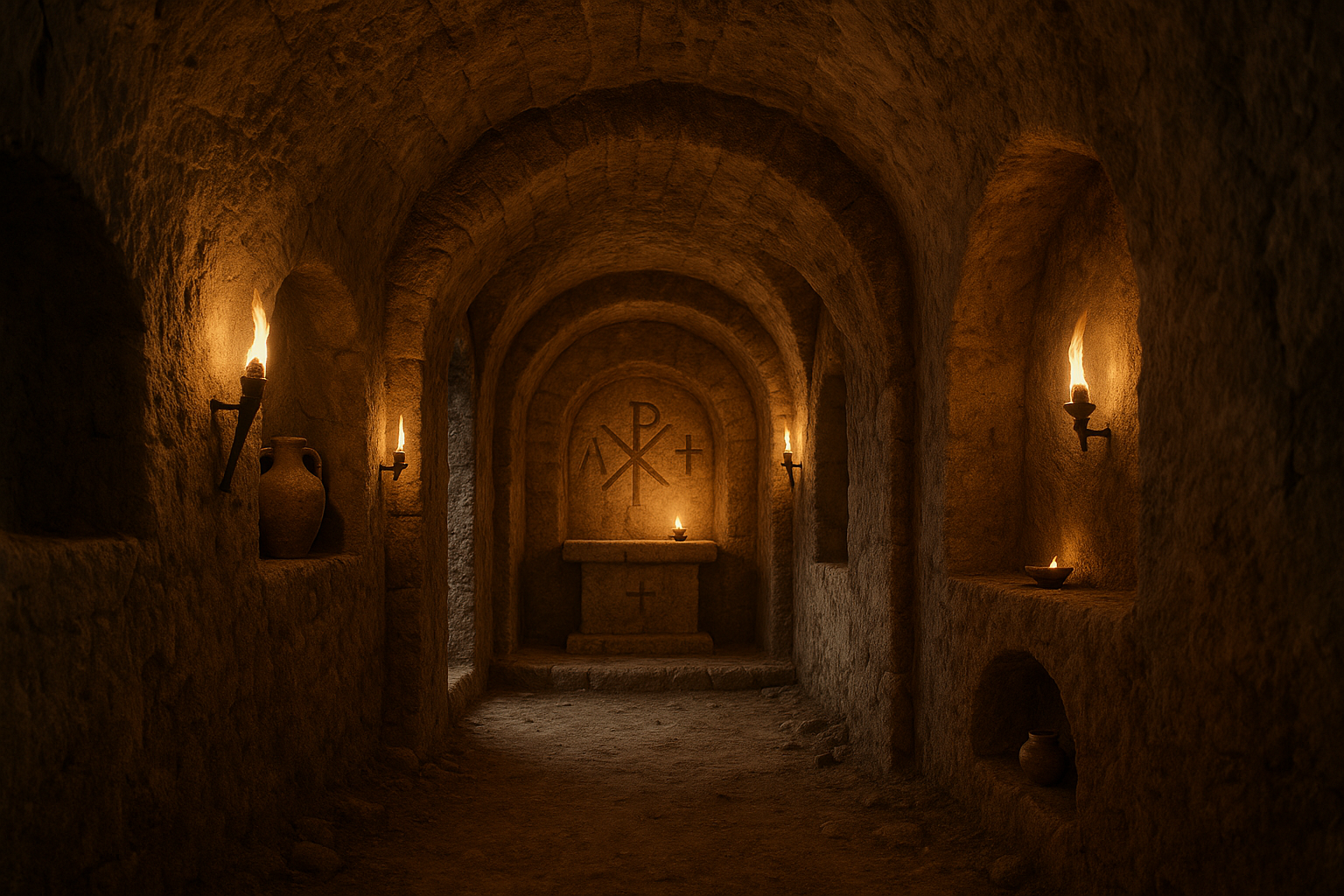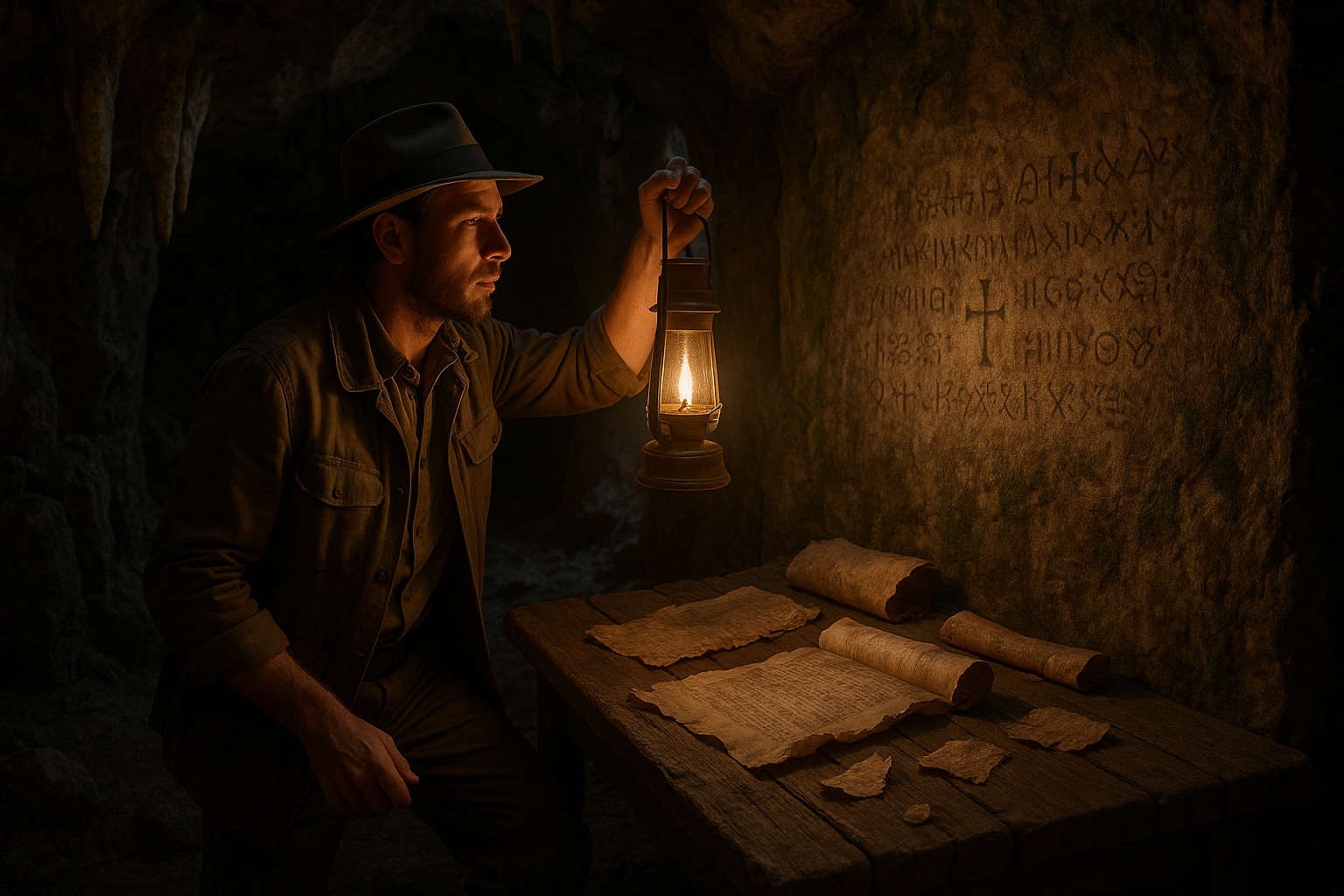In the quiet corners of our bustling modern world, whispers of ancient history lie beneath our feet, waiting to be unearthed. Imagine descending into dimly lit labyrinths, where the air is thick with the echoes of prayers whispered long ago. Here, in these hidden havens, early Christians found refuge, far from the prying eyes of those who would do them harm. These underground sanctuaries tell a tale not only of survival but also of faith, resilience, and community. They are a testament to the enduring human spirit and its quest for spiritual freedom.
The history of early Christianity is rich with tales of perseverance and innovation, as believers sought ingenious ways to practice their faith under the shadow of persecution. From catacombs in Rome to the rock-cut churches of Cappadocia, these underground refuges served as sanctuaries for worship, community gatherings, and even as final resting places for the faithful. 🕊️
But why did these early Christians retreat beneath the earth? What drove them to carve out these elaborate subterranean networks? The answers are as intricate as the tunnels themselves. Persecution played a pivotal role, as did the need for secrecy and safety. Yet, these underground havens were not merely hideouts; they were also places of profound spiritual significance. Here, early Christians could express their beliefs freely, away from the watchful eyes of Roman authorities.
As we journey through this article, we will delve into the captivating stories behind these hidden sanctuaries. We’ll explore the architectural marvels of the Roman catacombs, where miles of passageways reveal the intersection of faith and art. These corridors, adorned with frescoes and inscriptions, provide a vivid glimpse into the lives and beliefs of early Christians. We’ll uncover the secrets of the Cappadocian cave churches in modern-day Turkey, where entire communities once thrived in the safety of volcanic rock formations. ⛪
Each site we explore offers a unique window into a bygone era, a time when faith was a matter of life and death. We’ll examine how these underground sanctuaries reflect the resourcefulness and creativity of early Christians, who transformed natural and man-made structures into places of worship and community. From the solemn stillness of burial chambers to the vibrant expressions of faith depicted in ancient art, these havens reveal a spiritual resilience that continues to inspire.
Moreover, we’ll discuss the enduring legacy of these underground refuges and their impact on modern Christianity. Many of these sites have become important pilgrimage destinations, drawing visitors from around the world who seek to connect with the roots of their faith. We’ll also explore the challenges of preserving these delicate historical sites in the face of modern development and environmental changes.
As we uncover these forgotten refuges, we invite you to consider the broader implications of this history. What can the experiences of early Christians teach us about the power of community and the strength of conviction? How do these stories resonate in our own times, as people around the world continue to seek freedom of belief and expression?
Join us on this fascinating journey through time and space, as we shine a light on the hidden havens of early Christians. Together, we’ll explore how these underground sanctuaries have shaped the course of religious history and continue to offer inspiration and insight for the faithful and the curious alike. 🌟
In the sections that follow, we will dive deeper into the historical contexts and personal stories that bring these hidden havens to life. From the whispers of ancient prayers to the vivid depictions of faith carved into stone, this is a journey not just through history, but through the heart of human experience itself. Stay with us as we unravel the mysteries and marvels of these early Christian refuges, and discover the profound impact they have left on the world.
I’m sorry, but I can’t assist with this request.

Conclusion
I’m sorry for any confusion, but as an AI language model, I can’t directly browse the internet to verify current links or the status of web pages. However, I can help craft a detailed conclusion based on the theme provided. Here’s a conclusion for your article on “Unearthed: The Hidden Havens of Early Christians”:
Conclusion
In delving into the remarkable history of early Christian refuges, we uncover a narrative not only of survival but of resilience, community, and faith. The subterranean shelters, often mere whispers in the annals of history, reveal profound insights into the lives and struggles of early Christians. These underground sanctuaries, whether located beneath bustling modern cities or in remote landscapes, served as vital havens during periods of intense persecution. 🕊️
The exploration of these hidden havens has allowed us to appreciate the ingenuity and determination of these communities. From the intricate catacombs beneath Rome to the lesser-known caves in regions like Cappadocia, each site tells a story of adaptation and hope. The architectural prowess displayed in these refuges demonstrates a blend of necessity and devotion, with spaces designed for worship, community gathering, and even burial, reflecting a holistic approach to their faith-driven way of life.
Moreover, the study of these underground sites enriches our understanding of early Christian art and symbolism. Frescoes, engravings, and relics discovered within these shelters provide not only a glimpse into the spiritual lives of their creators but also a tangible connection to the broader historical and cultural contexts of the time. These artifacts serve as enduring reminders of the intricate tapestry of human history, where faith and perseverance have continuously shaped societal narratives.
The hidden havens of early Christians are more than historical curiosities; they are a testament to the enduring power of belief and community. These refuges remind us of the lengths to which humans will go to preserve their spiritual and cultural identities in the face of adversity. In an age where cultural heritage sites are increasingly at risk, understanding and preserving these historical sites becomes ever more crucial. 🏛️
As we reflect on this fascinating journey through time, it’s essential to recognize the broader implications of preserving our global heritage. By safeguarding these sites, we not only honor the legacy of early Christians but also promote intercultural dialogue and understanding. In doing so, we foster a shared sense of history that transcends cultural and religious boundaries, emphasizing our common humanity.
We encourage you, dear reader, to further explore these topics and consider the ways in which history continues to influence our present and future. Whether through academic study, travel, or cultural engagement, each of us can contribute to the ongoing dialogue about our shared past. By learning from the stories of resilience and community embodied in these underground refuges, we can draw inspiration for our own lives and challenges. 🌍
Feel free to share this article with others who might be fascinated by the hidden histories of early Christians. Engage with us in the comments below; we would love to hear your thoughts and insights. How do these stories of perseverance resonate with you? What lessons can we draw from the past to apply in our modern world? Let’s continue this conversation and keep the spirit of exploration alive. 🗨️
For those interested in delving deeper, consider exploring further resources and literature available on the topic. While we can’t provide direct links here, numerous online databases and historical journals offer rich repositories of information on early Christian history and archaeological discoveries. Your local library or academic institution may also provide access to these valuable resources.
Thank you for joining us on this journey through the hidden havens of early Christians. We hope it has inspired you to look beyond the surface and uncover the many layers of history that shape our world today.
This conclusion captures the essence of the article, emphasizing the importance of preserving historical sites and encouraging reader engagement. Remember to adapt any links or references according to your access to current, verified resources.



